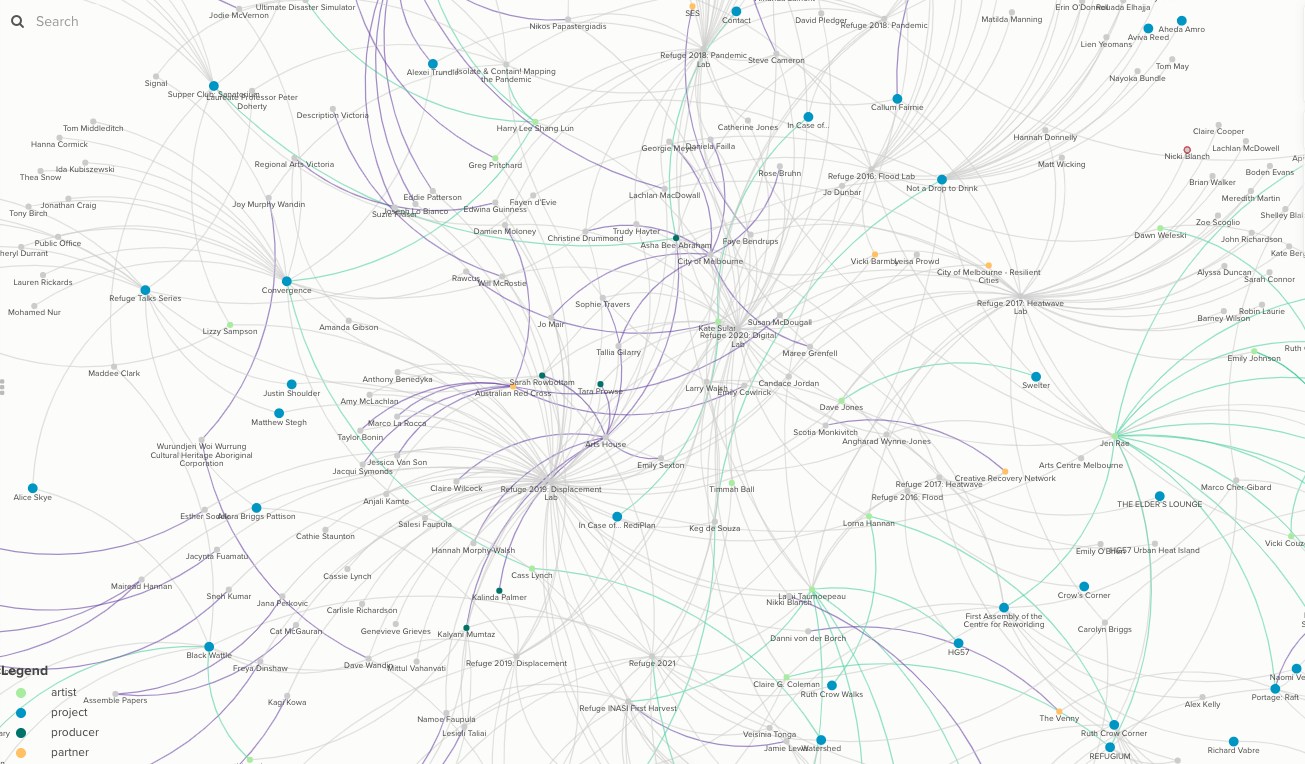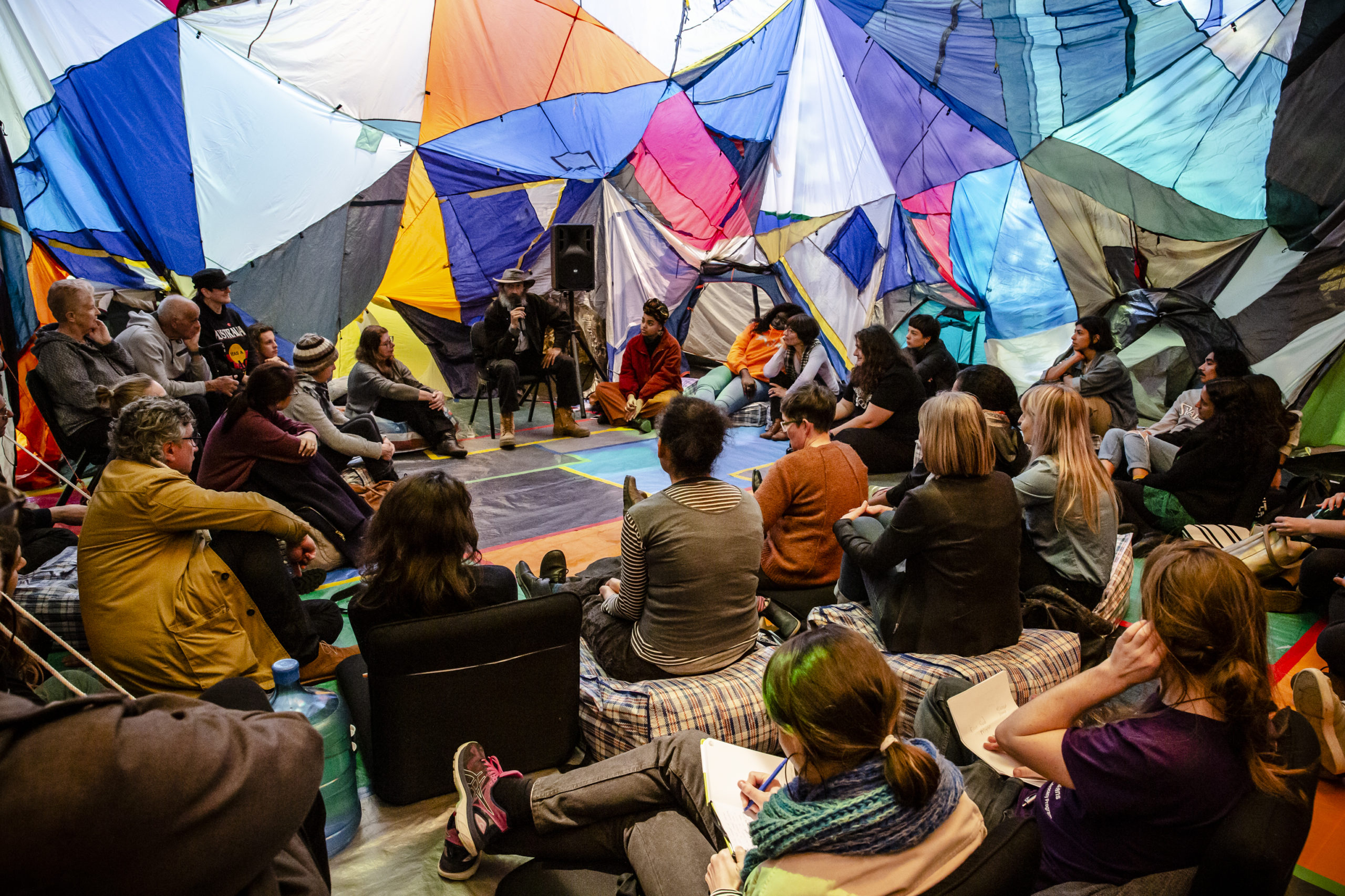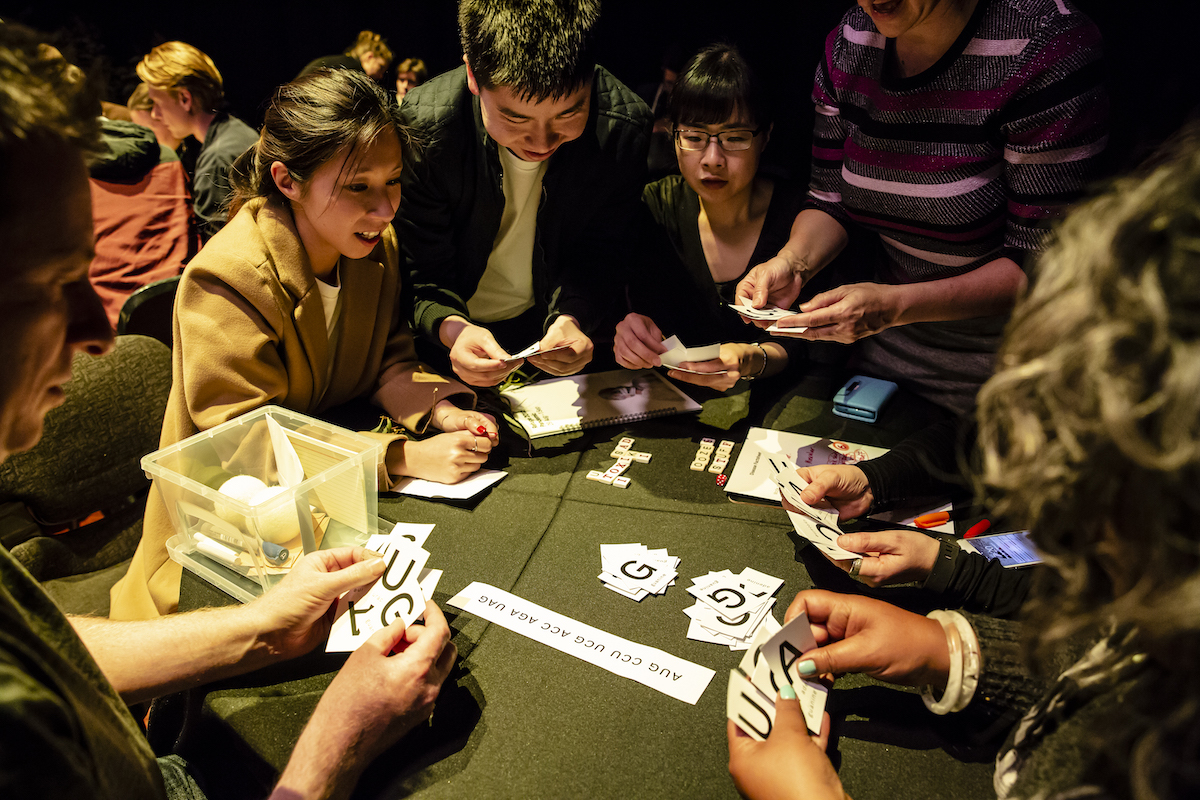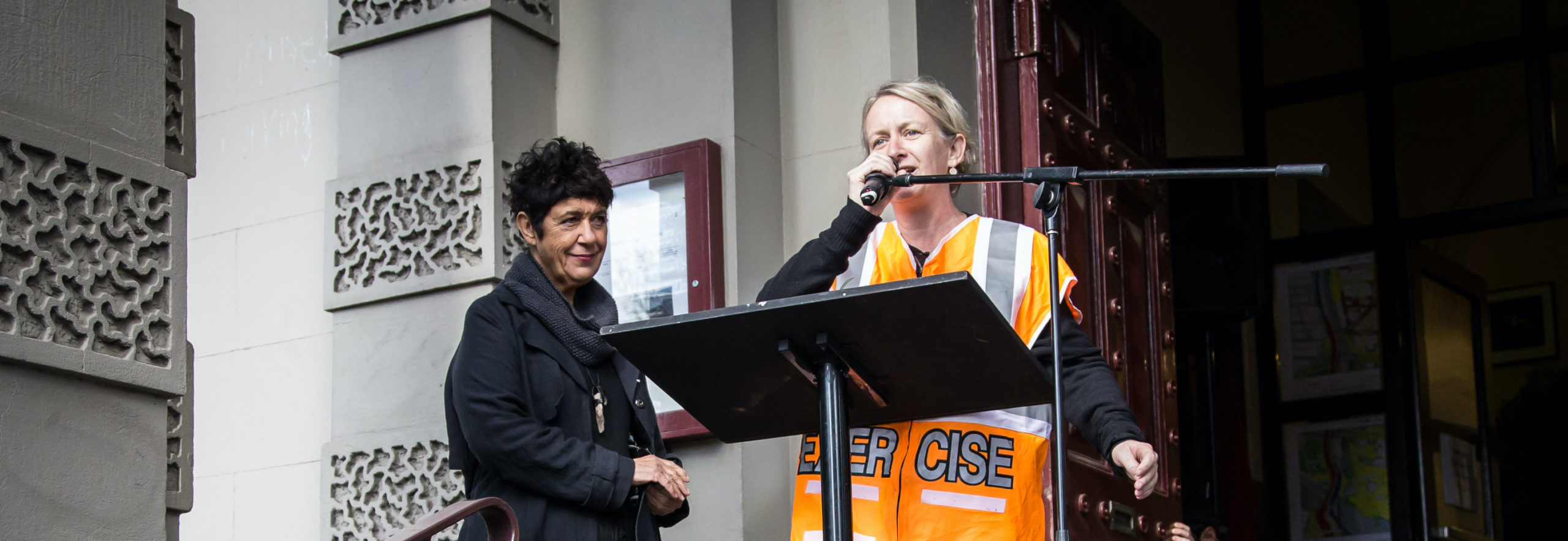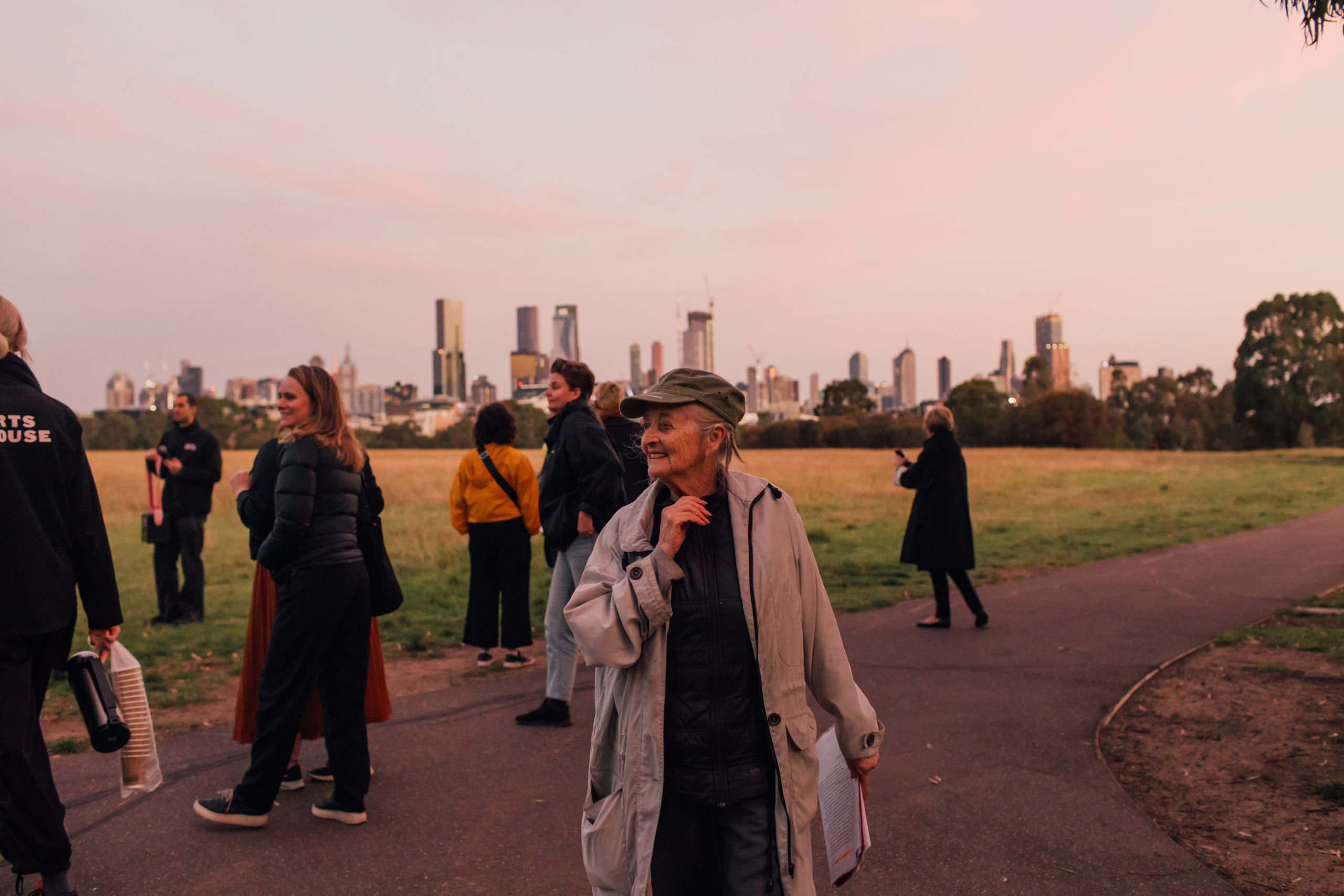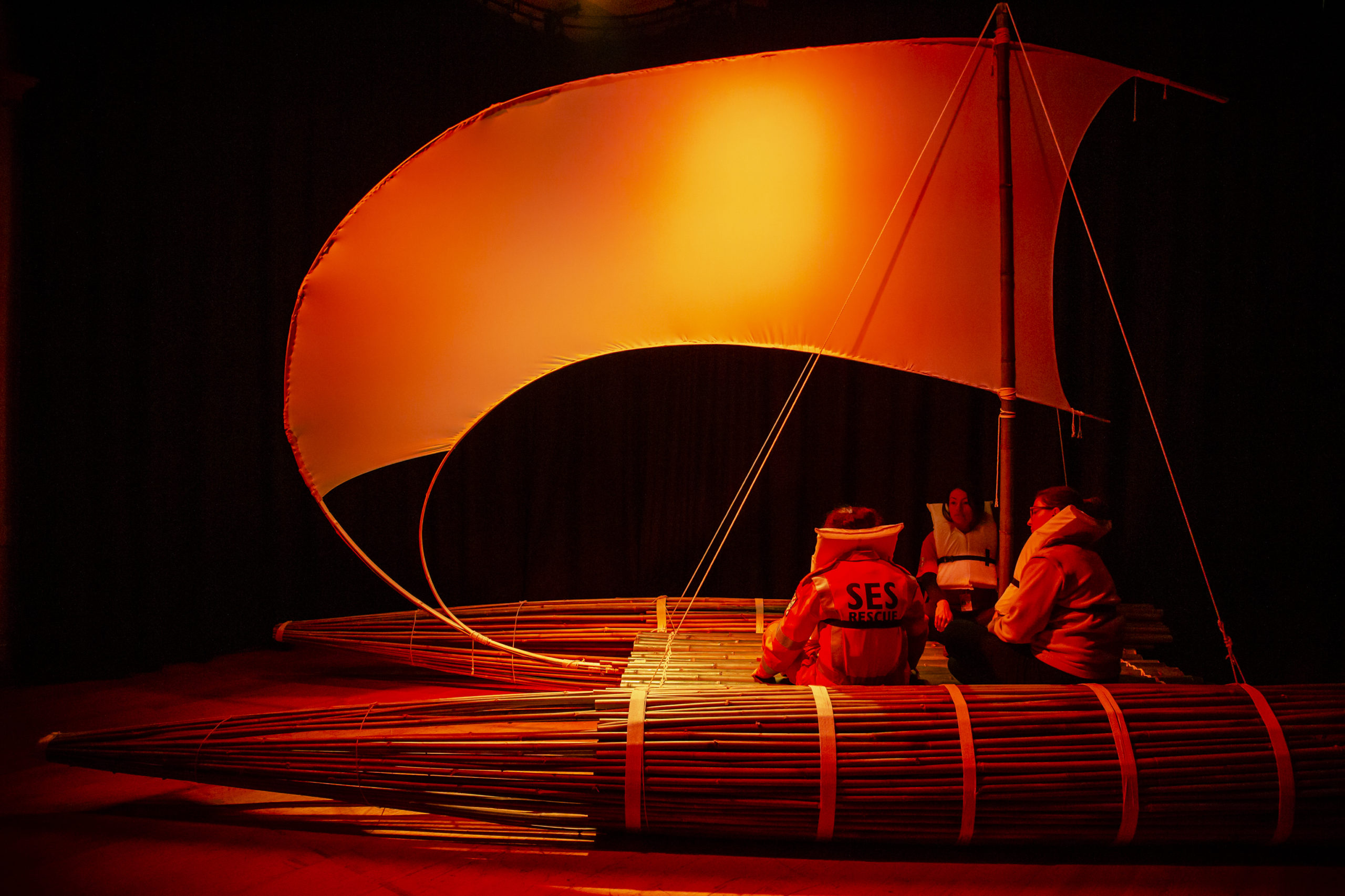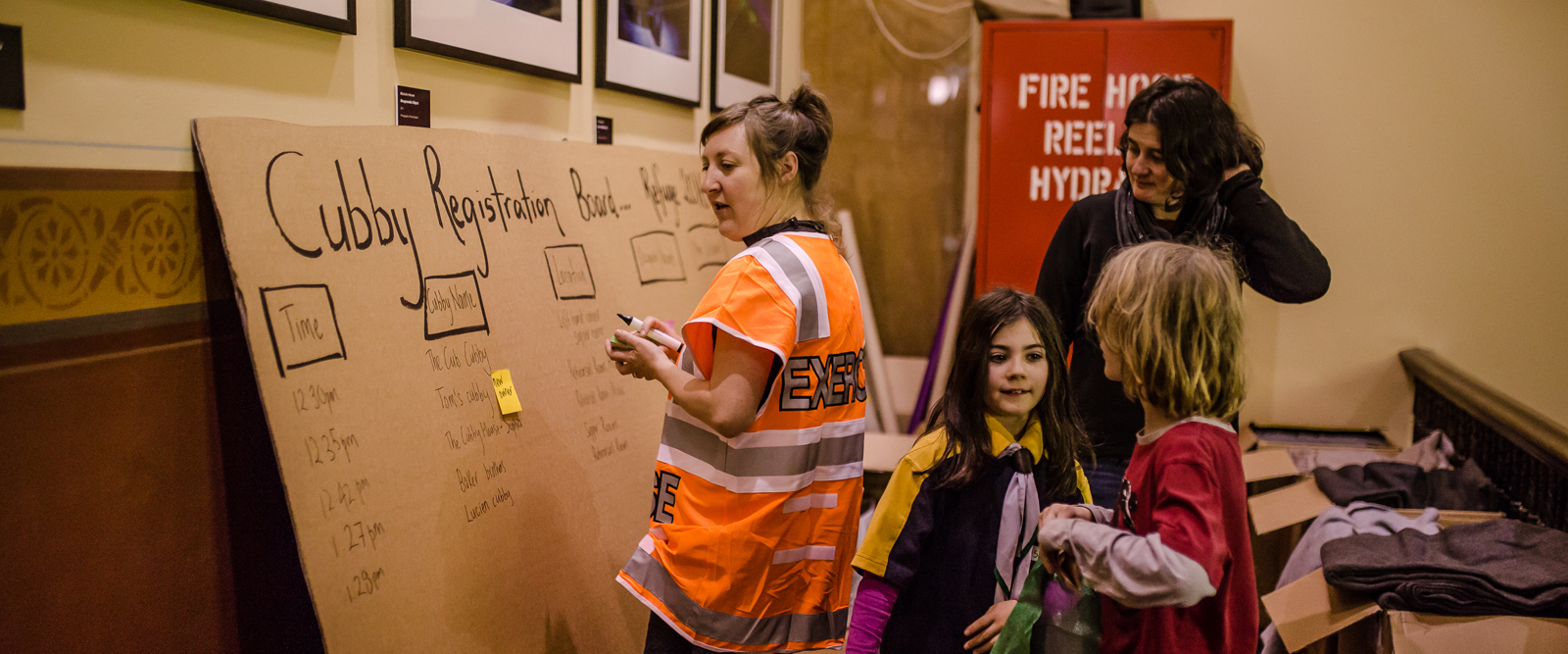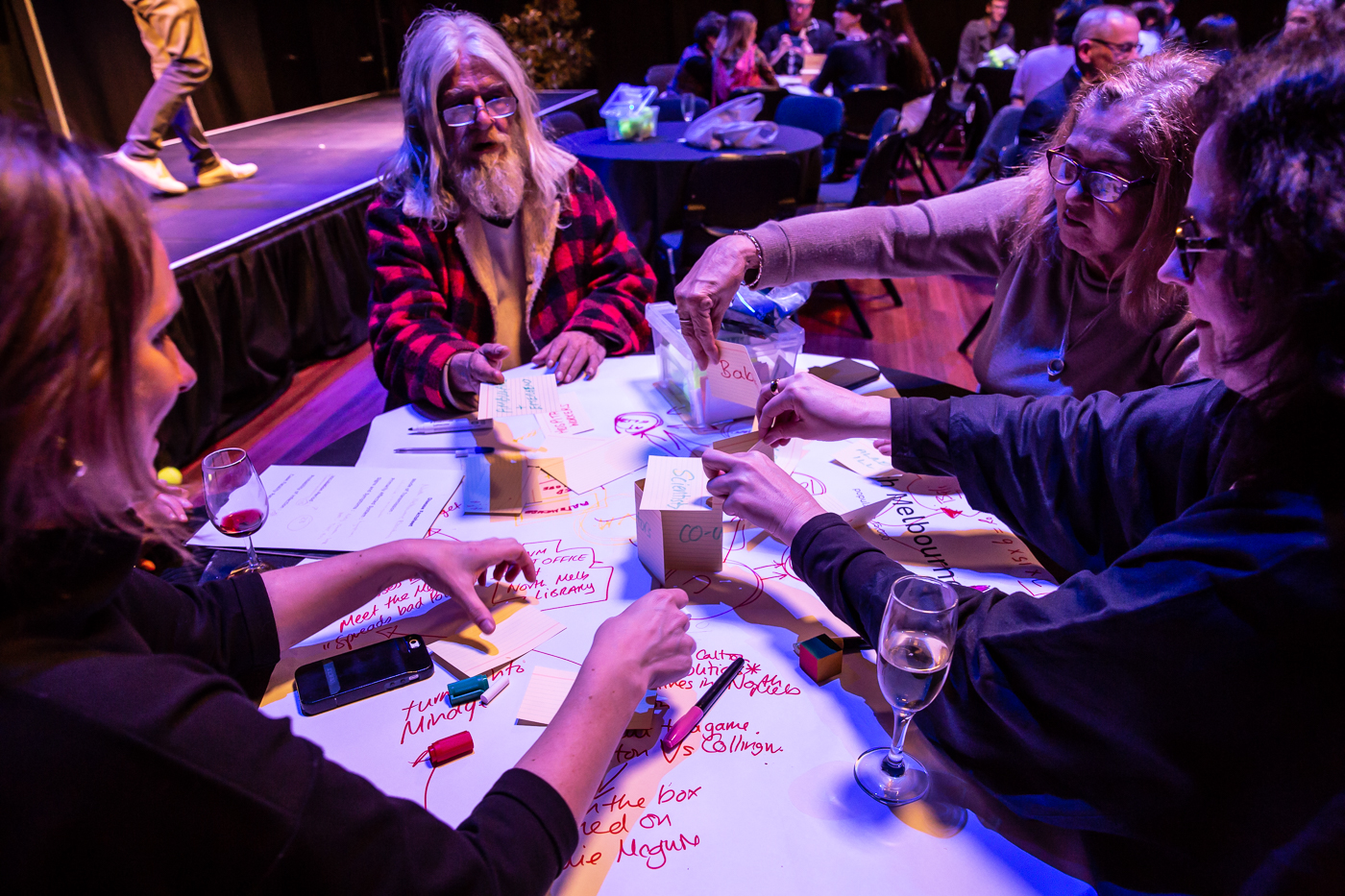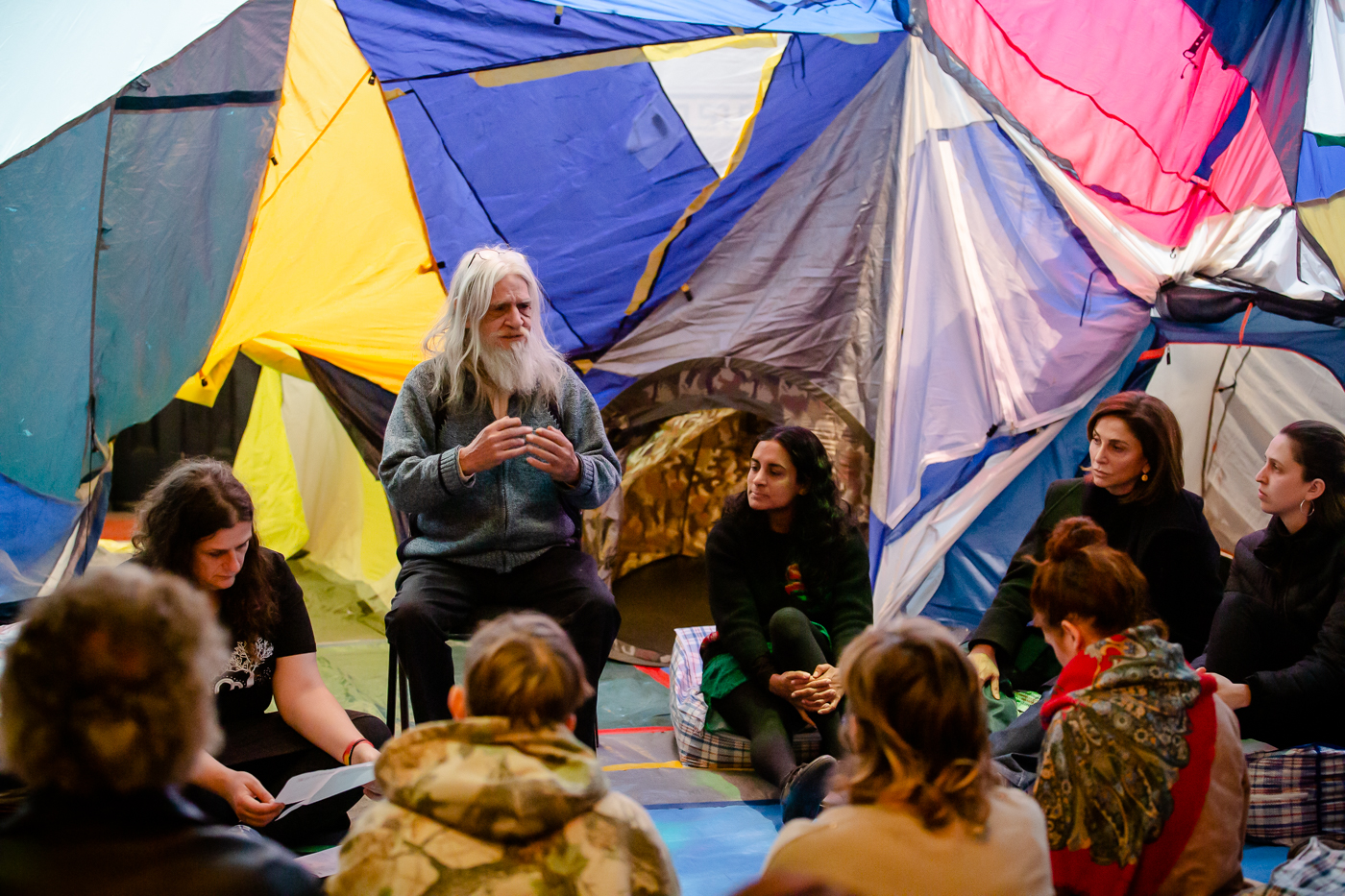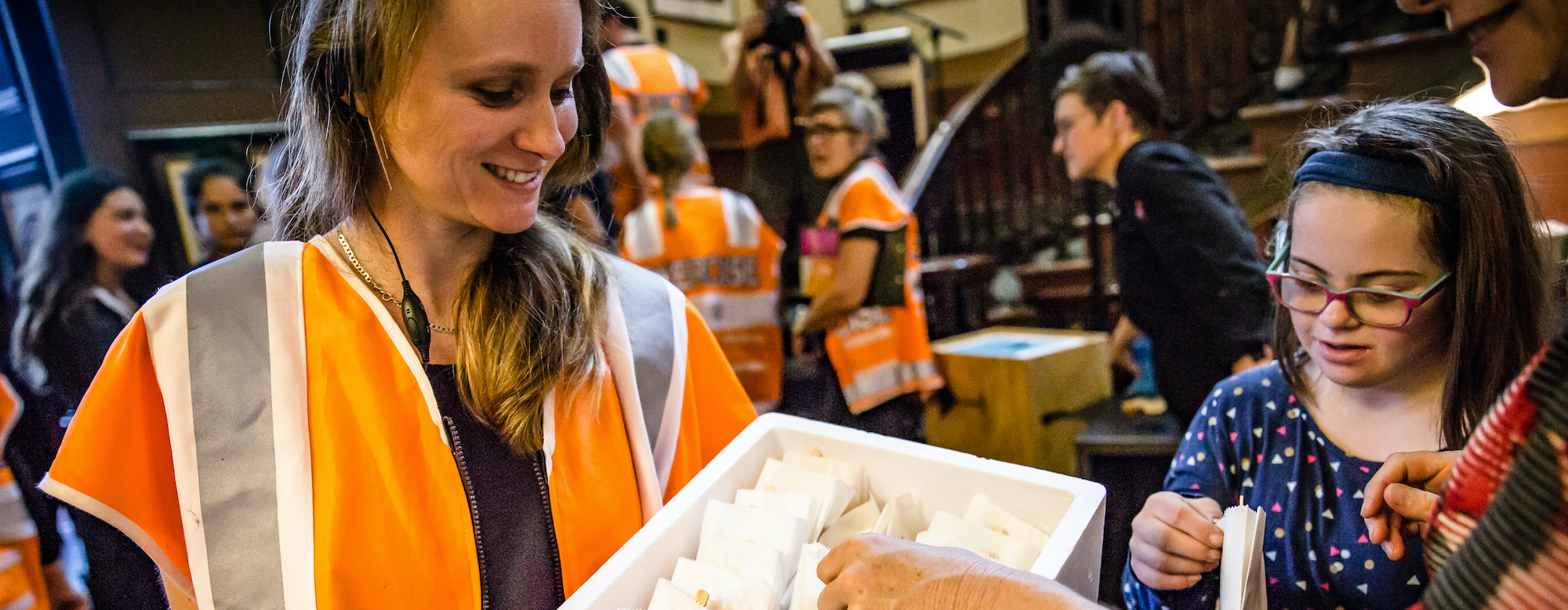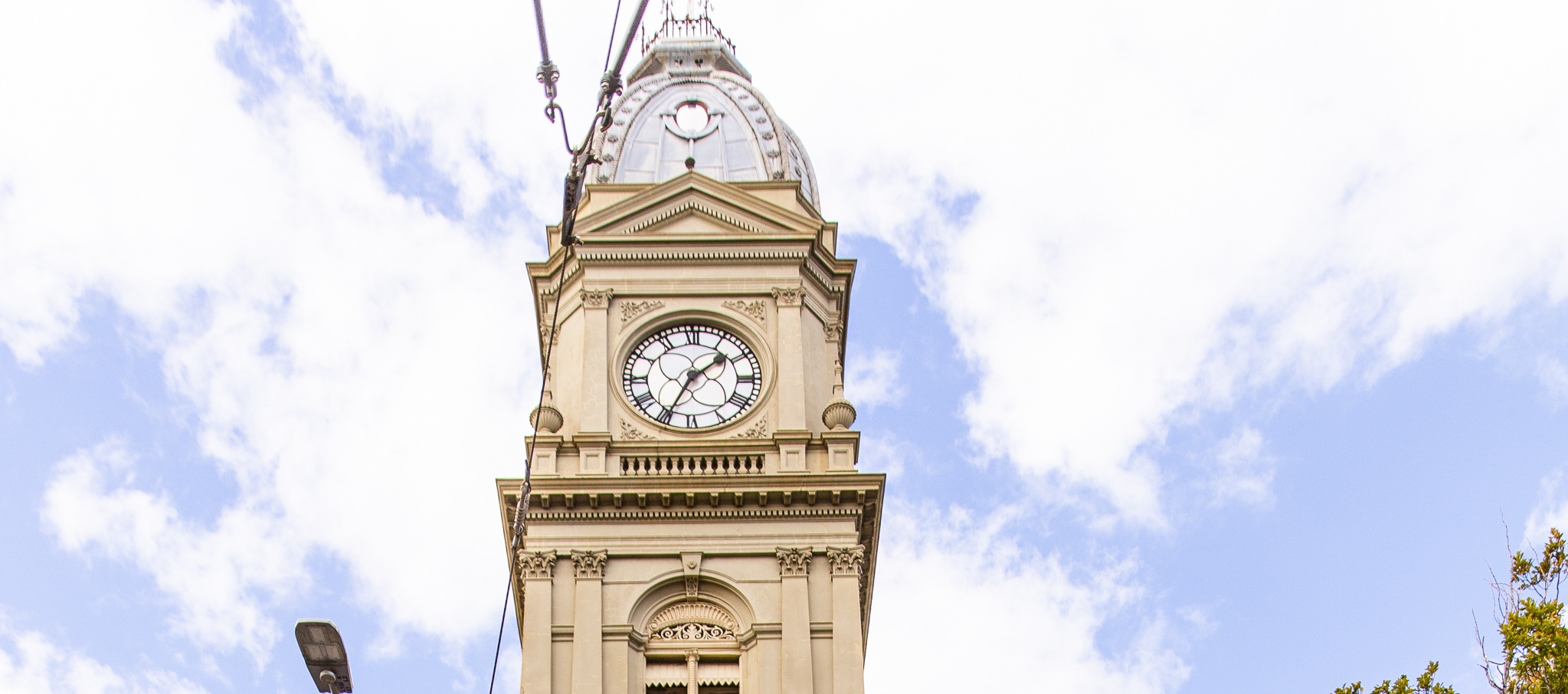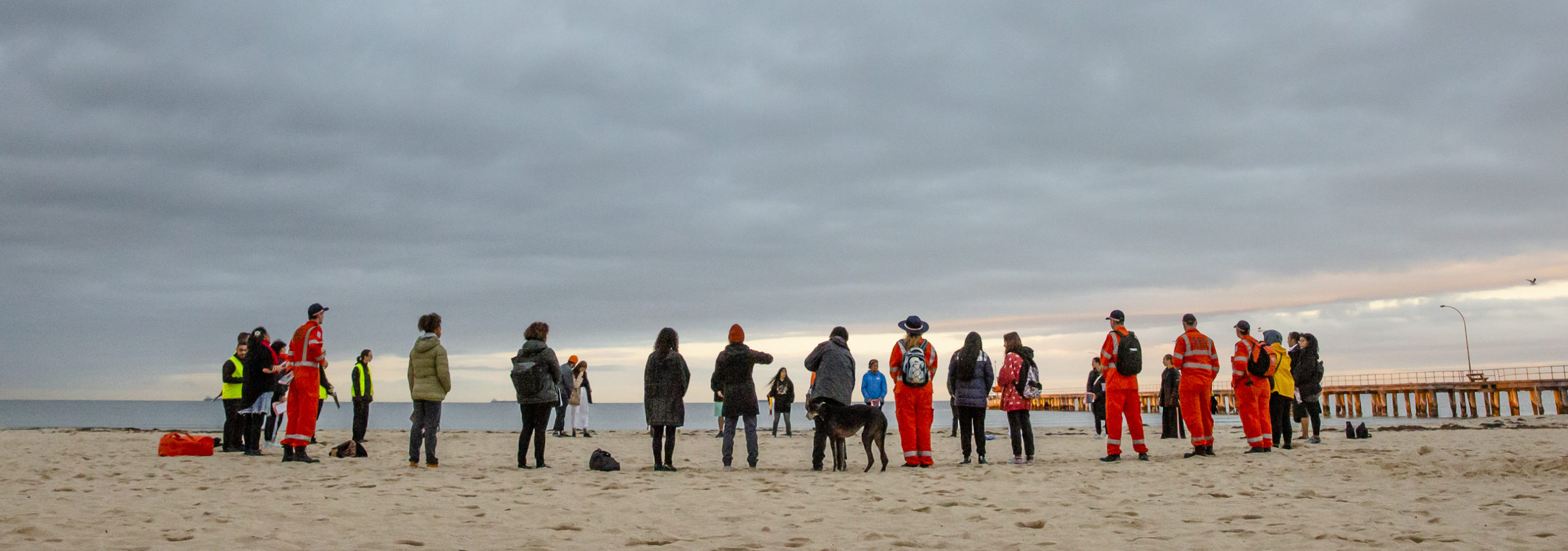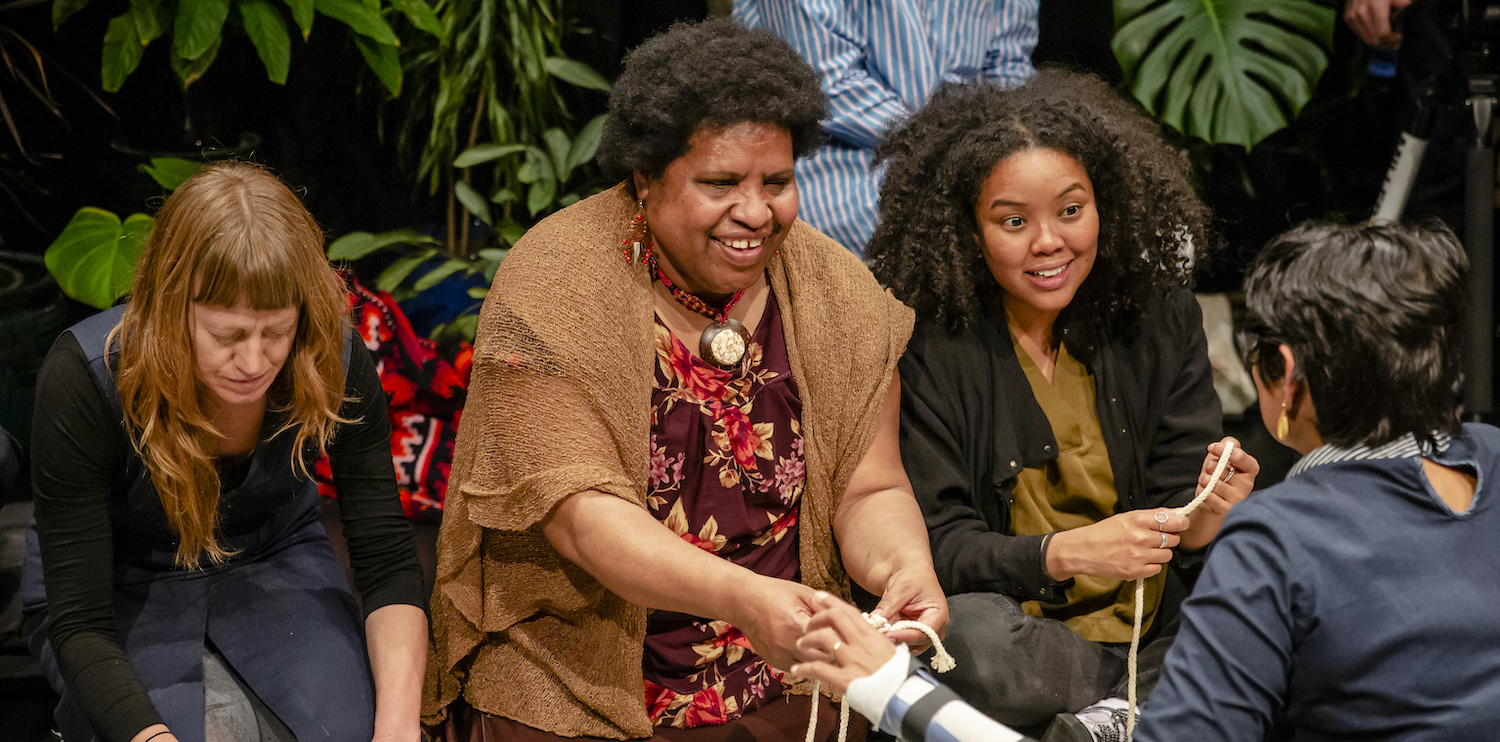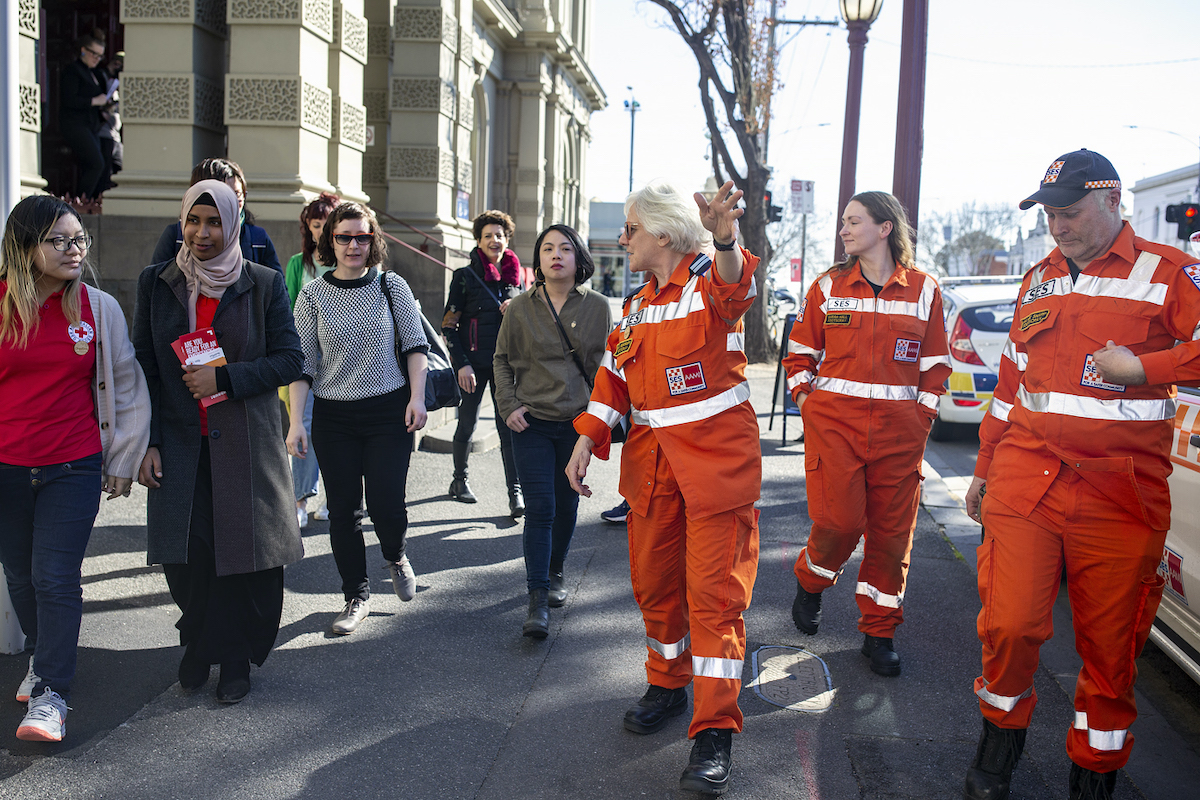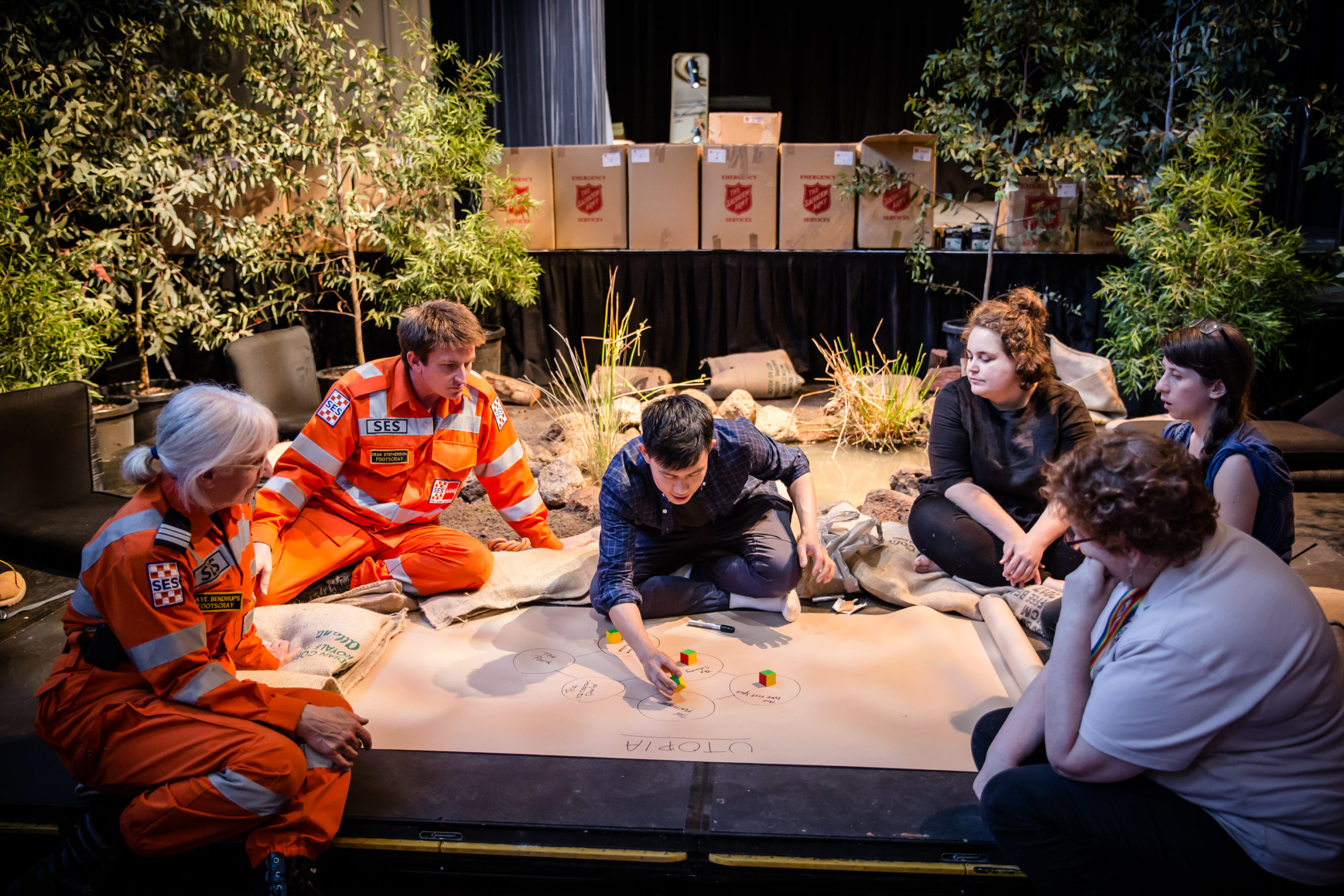Beyond the bricks and mortar of North Melbourne
N’arweet Dr Carolyn Briggs AM
This piece is from the collection, In The Time of Refuge.
Excerpt from a conversation between Boon Wurrung Senior Elder N’arweet Dr Carolyn Briggs AM and Refuge Artists Latai Taumoepeau and Keg de Souza.
Recorded on 19 July, 2021
N’arweet Carolyn Briggs
I was created in North Melbourne, and I lived in North Melbourne. My family lived in North Melbourne, a lot of black fellas lived in North Melbourne. So, there was a sense of connection to that place. We had the opportunity to meet diverse groups of people that came in and how they wanted to express their views, their values, in a safe place. I made a lot of connections.
Knowing they were visitors on Country, gave me a stronger presence in that place, and other First Nations communities. I think town halls should be more for people, more for organisations to have productive outcomes instead of just meetings. It’s a colonial construct that made its mark in place.
But now it’s opened up to all diverse groups of people. It became a bigger meeting place and produced a presence…for me it runs deep. It’s in the region that still has a major connection for lots of people, because it is in an area that a lot of Indigenous people came and settled. They had their different pockets around the circle of Melbourne. And some went to Eastern Melbourne, Fitzroy, Collingwood, they had made their presence there.
But North Melbourne started to change and grow and others, like our theatre group, ILBIJERRI went there. I came back in the 90s. My children went to the school there on Errol St, my godparents lived there. A lot of our community members think about the place, very much a part of their merging back into their communities. We have a lot of Wurundjeri, Boon Wurrung all living and immersing… Aunty Marge Tucker… all these people were played out as activists in our group after the walk off from Cummeragunja.
The unlocking of the Town Hall gave us another way of creating our own narratives. I used to be very involved with street festivals in North Melbourne in Errol Street. Back in the 90s I was running my own catering business. It was a bridging process.
Latai Taumoepeau
I was reflecting back on a few different conversations that we’ve had over the years around your food work. I remember one time you described a warehouse that you lived in, in North Melbourne.
N’arweet Carolyn Briggs
Yes, it’s still in Bendigo Street, the next block over from Queensberry Street. When you come out, down the steps, you look through gates in that laneway. There’s a pub on the corner and there’s a place that sells recycled goods, furniture, office furniture. That was the bluestone I bought.
I started up my catering business from North Melbourne, then I went to Gertrude Street in the Victoria Stars gymnasium, and then expanded to buying a restaurant in Lygon Street and was running bush foods that came down from Warragul. I couldn’t make it work in Melbourne so I turned it around and made it an active restaurant, fine-dine bush foods.
You can step outside of being that ‘marginalized other’, to finding your voice and creating a narrative. Listening and experiencing other people’s processes, of their acts of growing into a Country, that gives a voice, whether they feel safe enough, or they can have a place with the freedom to express it, and with good people around them. That’s probably what Refuge has done for me. And I believe this gives a sense of purpose – makes that (North Melbourne Town Hall) building accountable. Because town halls are supposed to be for community. It’s a colonial construct. I’m not here to disrupt it, but we can disrupt it in the inside and allow young people to feel that grounding can be done there.
And I suppose Refuge built a sort of a sense of family. You know, might be an organic family, but it gave me food, gave me insights into other people using it as an amazing platform.
Latai Taumoepeau
If I remember back to one of the first public events of Refuge, and your Welcome at the front steps of the Town Hall. I remember seeing you standing in your beautiful possum cloak…and the smoking ceremony. People were in hi-vis vests which said exercise on it. It was such a surreal beginning of a project. Your sense of welcoming and belonging created that sense of family for us. But also, it forged the necessity for Refuge to always have proper intergenerational relationships with people such as yourself. Your welcomes give us an understanding of things that happened well and truly before the bricks and mortar of buildings like the Town Hall.
N’arweet Carolyn Briggs
It’s taken that long to be able to create those Welcomes, without fear. And I keep adapting it, to put it into understanding what those values are. When I talk about yulendji, it strengthens me to speak some of my language, without fear, but it’s also how I grounded it with purpose. It’s also about knowledge, and about respect. It was also about embedding knowledge of the sacred ground on where bricks and mortar is now every day present. How we reimagine what it would have looked like before, when it was wetlands, and that was how you navigated your world before the 200 years of settlement. You have to reimagine how people had to move through Country, how they had to go to high ground, how they had to build their refuge, and when they could come back for the resources. And it was having a way to be able to voice those thoughts to give people a different context about place. Because you can go anywhere in the world, and you’ll find a place like that with bricks and mortar.
Keg de Souza
I think that intergenerational knowledge sharing that you’re describing Aunty is so important and the way that you’ve been involved in so many different Refuge projects over the years. The way your knowledge has been able to come through in so many different forms and ways is so rich, and I think, that, thinking about the past, and learning from the past and looking to the future, and bringing that all together is such an important part of building the community around the issues that is happening through Refuge.
N’arweet Carolyn Briggs
And that has been the highlight of my growing too. I grow with the process as well, as much as I can share, and then I think about things, go away, and then it starts to scaffold. I’m not the passive listener.
Keg de Souza
I think that type of knowledge sharing is the best kind – when it’s shared. And it’s not just a one-way depository.
N’arweet Carolyn Briggs
That’s right.
Keg de Souza
Co-learning is what makes the interaction really important, it makes that knowledge sharing really strong. I feel like that’s clear through so many of the projects that have come out of Refuge in such different ways and intersecting with very different things.
N’arweet Carolyn Briggs
That’s right darlin’. And at the end of the day, we’re all human, we can grow stronger with it. We bring different things, and that’s okay. But somehow, bringing differences brings strength. And we can unpack, repack, and keep building, because you’re building on other people’s life experiences as well.
Keg de Souza
What you’re saying reminds me so much of one of my favorite authors, Bell Hooks, who talks about how you build resistance in the margins. It’s no surprise that Indigenous Australians are often ones who are supporting refugees, because those lived experiences of displacement are so real and so impactful, there’s a real similarity. Displacement off your lands, wherever they come from. And welcoming other people who have been displaced.
Latai Taumoepeau
An objective for many of the artists in Refuge has been the idea that preparedness for the future has to come from understanding who’s always been there. Something that I’ve really enjoyed learning from you, and the elders over the years, is how to care for Country, which includes all the people in it, all the life forms. It all comes down to the relationships and the connectivity that we have, through all the knowledge sharing over the years.
Keg de Souza
Yeah, being able to build projects that go over different years, gives a rare opportunity to continue to work with people again, revisit the same community, continue those relationships. When you build it from the actual community, rather than trying to impose it, it’s such a different thing, which I think is such a strength.
N’arweet Carolyn Briggs
I think it’s the building of trust too. And it’s been that building of trust, because you share a bit more about yourself at each stage.
Latai Taumoepeau
And that’s why we’re benefiting from the trust that you have in allowing us to collaborate and create new ideas around what you are sharing with us. That’s the gift of having Elders…
N’arweet Carolyn Briggs
You empower me too, it’s always that reciprocity because your views or your worldliness is going to bring in other elements into my thinking, and you’re not holding it back. You’re bringing it forward. And it’s how we listen to that, the depository I’ve built in here. I have to think about how I unpack that. And the mastery of knowing what’s going to be important for me too and how that will be transmitted to other young people. I have to now listen to my grandsons’ dreams and visions. They’re always exploring, they’re teaching me how they think about the world that they live in now.
Keg de Souza
Yeah, because they’re part of that reimagining, right? So they’re reimagining how it is. Thinking about how you reimagine yourself in a world that you know, like Naarm, where it has the colonial imprint of a city on top of it. You have to reimagine how you can practice culture, how you are in your lived experience of every day to be able to be in that space, because it does have this attempted colonial erasure. And so, how do you fight against that? how do you exist within that and keep your culture strong and your identity strong? You have to reimagine things. Time goes on as well.
It reminds me of Mary Graham writing about Place and talking about place not just being the physical Country, but it’s also a time in place and space and spirituality as well. It’s not a physical point. But it’s also time and an event. It’s so layered…
N’arweet Carolyn Briggs
When we talk about Country, we talk about it in the context of it as a living entity. It’s a living being. It’s embedded in spirituality. It’s embedded in stories. It’s embedded in creation, you know? And what are these values that came out of that? That heal Country? So, we have to break that down? What does that look like? It’s more than a word. It’s…how do we take action? How do we know the Country we’re on? Who were the people that lived and died before we were here? Do we know their names? We weren’t just silent partners in the construction of this place?
Latai Taumoepeau
For more than six months, I constantly reflected on the story that you shared about the Birrarung. When they started dredging that space, scientists realised the river (Birrarung) under the Yarra was true.
N’arweet Carolyn Briggs
…will always be… that river, that river journeys all the way through down to Point Nepean and there’s a massive waterfall there between Queenscliff and Sorrento. You can’t see it, but you can know it’s there. And you can feel it when you’re crossing between Naarm and Western Port… You can feel the force of that pulling you down, and how Naarm had come all the way up and then receded back 800 years ago, and how the grasslands under that Bay is still present. Because you can see it in that island in the middle of the bay.
Latai Taumoepeau
We know it’s there, because you tell us that it’s there. And that’s the way information has always been passed on from generation to generation. And now we can receive that information from you…
N’arweet Carolyn Briggs
And it was already told, that story, and then I re-wrote it into today’s narrative through the time of chaos. When we broke lore with each other, how we broke lore with our environment, how we broke lore with our fish, our ecology. And that all comes out. I didn’t know when I was writing that story. Because it’s the child in me who wants to find my way around the world. I didn’t know it had purpose. You know, like, the time of chaos, we broke lore. We as humans have broken lore with Country and people. And we devalued each other till we were brought into line.
By the deity, you know, he took on the spirit of an eagle. But it’s reminding us how we created our world from our worldview. I didn’t know I was writing about the environment. But you’re taught that you can only eat meat not in its birthing cycle. And you can’t eat fish during the spawning season. And how you could read your Country. So that starts to come together, through stories. So how do you heal Country? Because if you can’t heal the trees or the birds or the marsupials or your animal world… how do you build? How do you heal it? Water is our Country. So, I now think of it because people want to use it.
Latai Taumoepeau
It was very necessary, because it teaches us how we need to constantly be thinking, asking those same questions ourselves, to get on the same page as your imagining of Country.
N’arweet Carolyn Briggs
I think we do that. I think you do that. Keg does that. And we find an area that we can come together and look at that. Because solutions could be good at one certain time, of that period of time. And it will change, and we will be exposed to so many other ways.
Latai Taumoepeau
Aunty, thank you so much for all of this wisdom. (Thank you darling) I’m just thinking you must need a cup of tea or something.
N’arweet Carolyn Briggs
I do need a cup of tea and I’ll think I’ll go on to get a cup of tea. Strong. Everybody knows that one by now. I may change the order. Just to disrupt…
Header Image: Boon Wurrung Senior Elder N’arweet Dr Carolyn Briggs AM, Refuge 2019: Displacement Welcome Ceremony, Photo by Bryony Jackson.
Image description: An Aboriginal elder stands holding her arms in the air, addressing the room. She has a microphone in her right hand and a black note book in her left hand. She is wearing a long brown coat and grey scarf. A cello sits behind her leaning against the wall and there is a blur of someone standing in the foreground.
